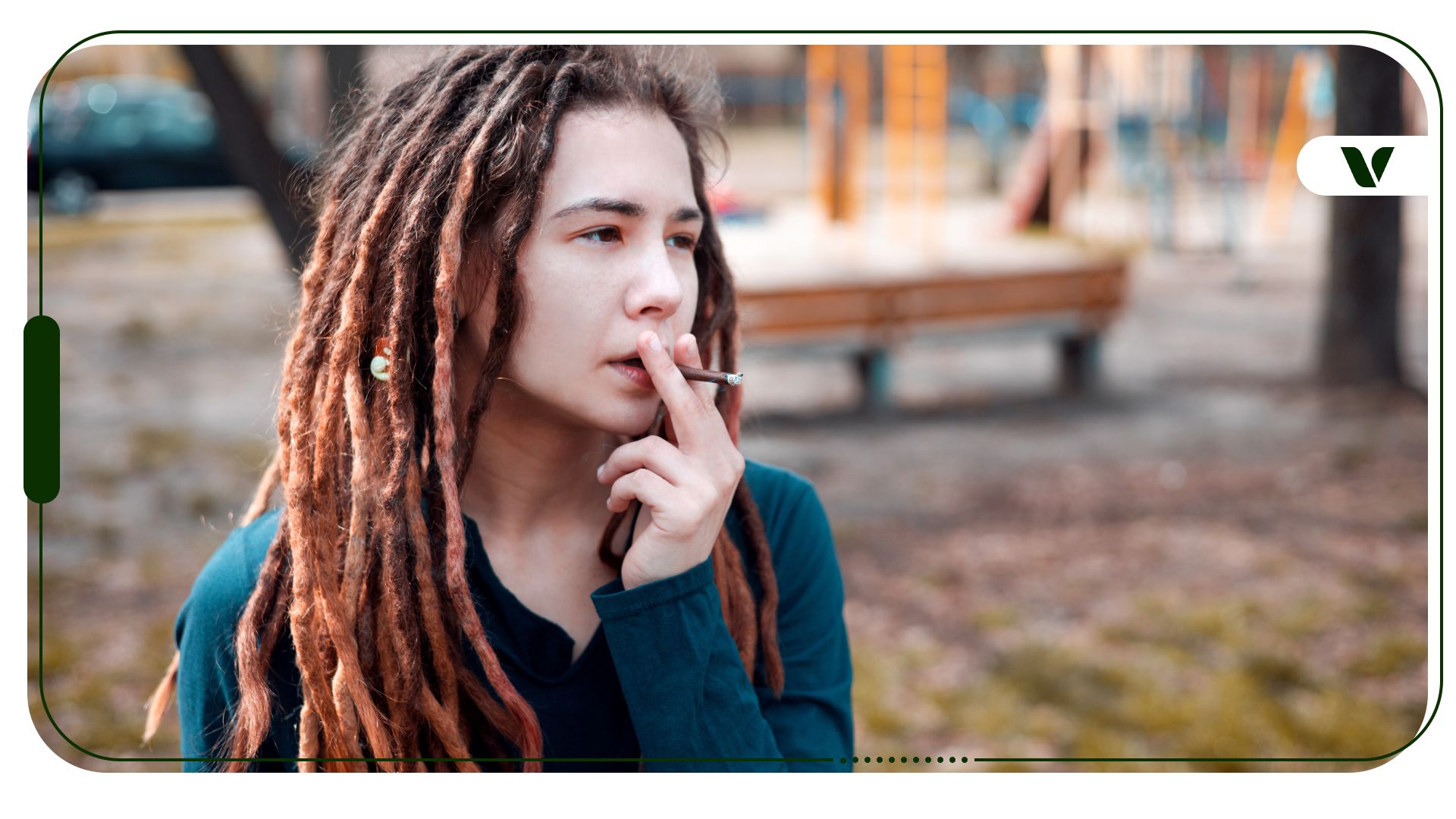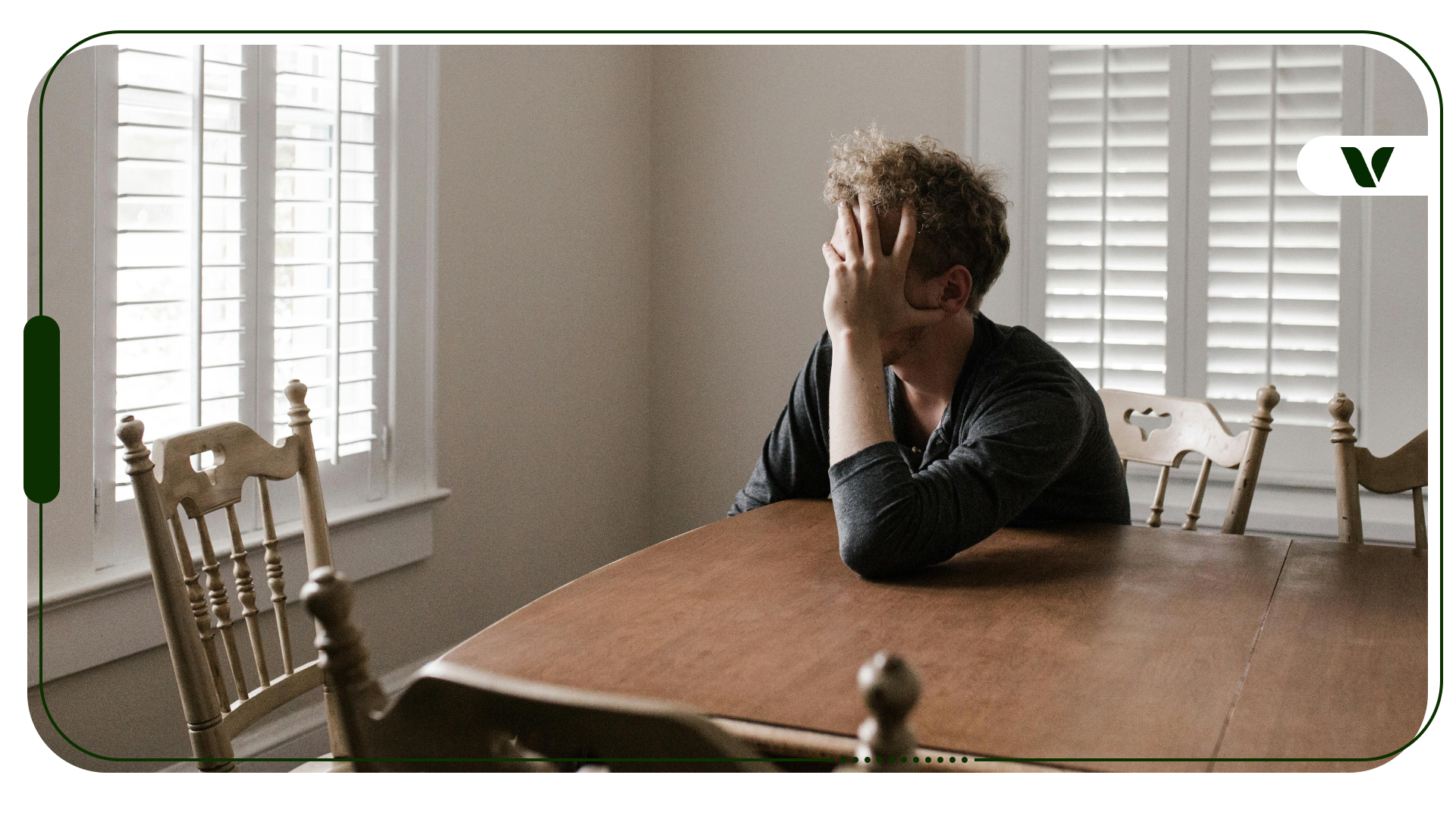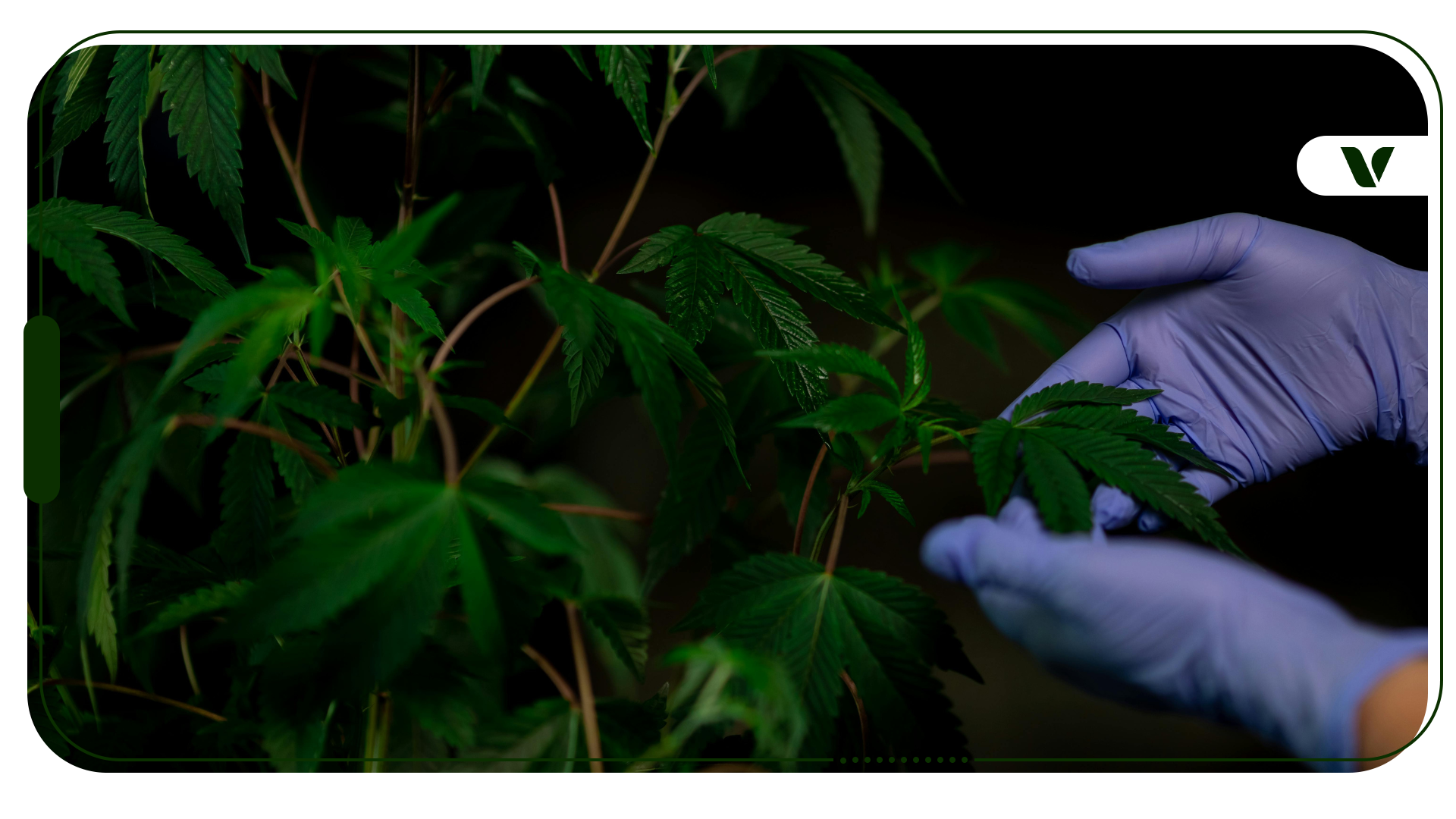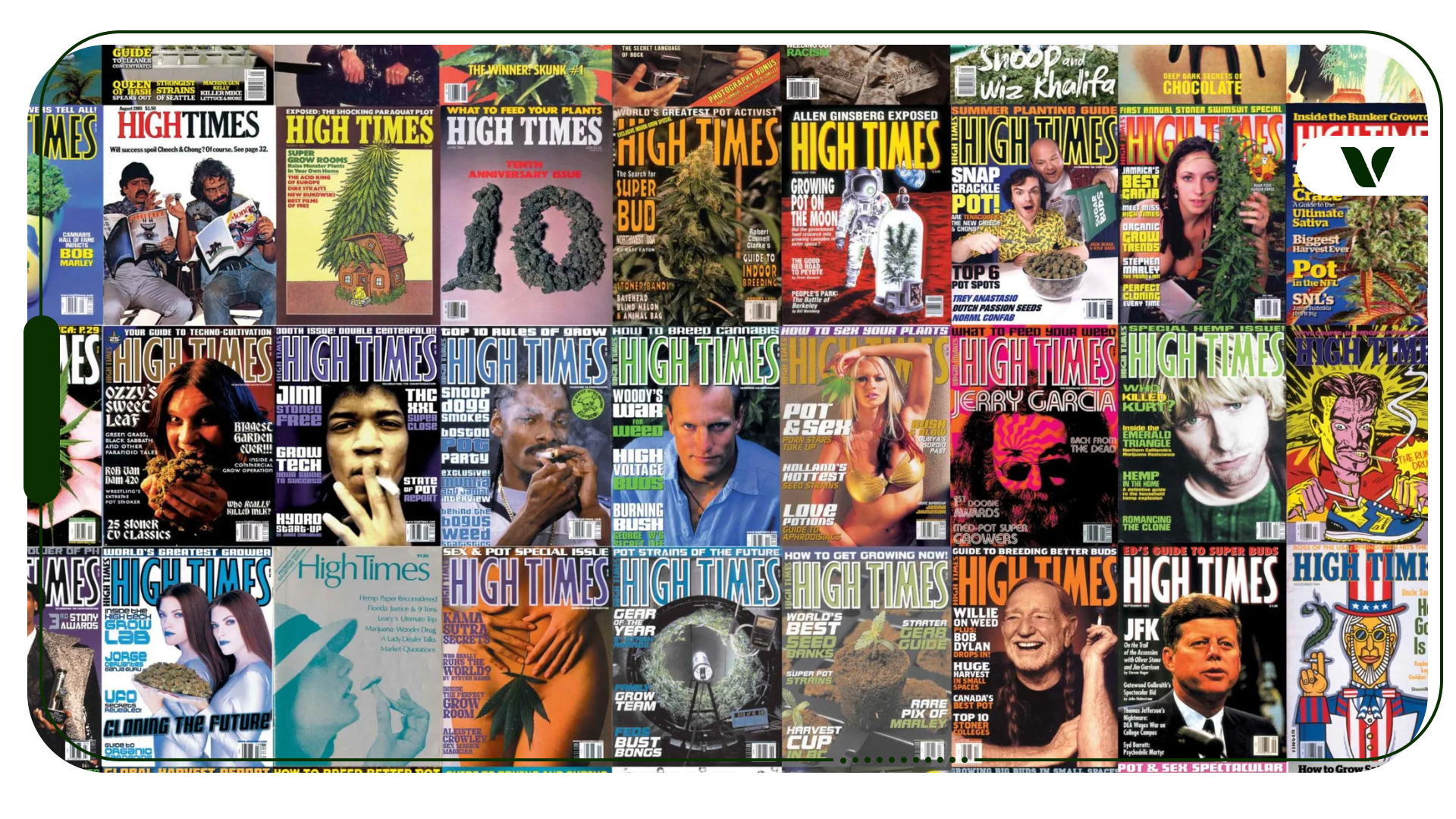Blunts: what are they exactly, and how do they affect your body? If you’re interested in smoking blunts—or already smoke them—this guide is for you. We’ll cover everything you need to know about this popular cannabis intake method, including how they’re made, how they differ from spliffs and joints, risks of use, and alternative intake methods if you’re not sure blunts are for you.
Plus, we’ll also determine if the health risks of blunts are worse for the user than other forms of cannabis consumption. And if so, what are some close alternatives to consider? Let’s explore some of these questions in more depth.
What Are Blunts?
Blunts are cigars that are modified to include cannabis, and there are a few different ways to make them. Blunt consumers start by purchasing a cigar wrapper (“blunt wrap”) for ease, or either a cigar or cigarillo (a shorter, more narrow cigar) if you have more experience.
The inner, smokable tobacco is then removed by splitting the cigar open, using either fingers or a tool such as a knife or a blunt splitter to cut an even line along the length of the cigar. Finally, ground cannabis flower is inserted into the tobacco paper, rolled, and resealed to create a blunt.
How To Roll A Blunt
When making a blunt with a more traditional cigar (e.g., Backwoods, Philly), it is necessary to first remove the outer tobacco leaf. If using a cigarillo (e.g., Swisher Sweet) then the consumer may split the blunt immediately without removing any outer layer.
If using a cigar wrap (e.g., ZigZag), there is no need for any of the aforementioned steps since the wrap comes ready to roll (similarly to a joint paper but made from tobacco leaves).
After someone successfully splits their cigar and removes the loose smokable tobacco, they may proceed to insert ground cannabis flower and reseal the blunt by tucking and rolling the paper tightly enough so that no flower falls out of either end (but not too tight so that it is unsmokable).
When rolling a blunt, people will typically lick and seal the blunt as they roll it; the saliva works as an adhesive to seal the blunt shut.
Optionally, you may slightly wet the wrapper instead to gently moisten it, particularly if you are sharing it (sanitary) or want to make the wrapper easier to work with.
Potential Health Risks of Smoking Blunts
Since tobacco is still present in the wrappings of traditional blunts, the same risks faced by cigarette smokers apply. It’s common for cannabis smokers to hold themselves apart from cigarette smokers, but it’s a mistake to do so in this instance.
Before lighting up a blunt, read the warning label on the cigar that was modified to make it. Everything that is written on the cigar packaging still applies to the blunt you’re smoking, because the wrap used is a tobacco product.
According to the American Lung Association, smoking and consuming tobacco is strongly associated with negative health effects, including but not limited to increased risk of heart disease, lung disease, stroke, several cancers, and damage to blood vessels.
But the risks can actually go further for those smoking blunts. Tobacco smokers generally exhale right after inhaling; however, cannabis smokers hold the smoke in their lungs to allow the flavor and high to set in, exacerbating the exposure, airway temperature, altering gas exchange, and potential danger of any tobacco present.
Smoking tobacco is the #1 cause of lung cancer, even with cigarette smokers tending to exhale quickly. Holding the smoke in your lungs can only increase those risks. Studies have also indicated that the amounts of nicotine present in blunts can lead to the development of addiction—something cannabis users generally don’t need to worry about when they use cannabis-only products.
Safest Types of Rolling Papers
If you’re planning on rolling and sparking up a joint or spliff, you may be wondering if the type of paper matters. Let’s explore three types of rolling paper, each of which brings something different to the table (or rolling tray).
Wood Pulp Paper
Cannabis consumers have been using wood pulp rolling papers to roll up for over a hundred years. They are generally thicker than newer types of papers and come in bleached (white) or unbleached (brown).
These papers are very thick and textured because wood pulp is quite solid. These attributes make these papers great for beginners because they tend to hold their shape well. They also aren’t heavily affected by moisture levels (e.g., humidity, sweaty hands, etc.) and have a medium burn rate.
Rice Paper
Rice rolling papers are thinner than both hemp and wood pulp papers, which is less taxing for your lungs but may require more effort when rolling. Due to their thinness and smooth texture, rice rolling papers don’t grip well when rolling and are vulnerable to humidity, rain, etc.
Though rice rolling papers are thin, they burn slowly. Relatively speaking, they are the best papers for your health, but they probably aren’t best for beginner rollers.
Hemp Paper
Hemp papers, like wood pulp papers, are thicker and rougher than rice ones, which helps them provide a good grip when rolling. They are good for the environment since hemp saves trees, pulls carbon out of the atmosphere (carbon fixation), and detoxifies soil – but are not necessarily better for your health than rice papers despite being naturally derived.
If you’re looking for the healthiest option of hemp papers, try and find hemp rolling papers that are free of any harmful additives. They have a medium burn rate and therefore go out less often than rice papers.
Palm Leaves
Palm leaves have gained popularity recently as a healthy alternative to blunt wraps. These all-natural wraps—made from Cordia palm leaves—are free of tobacco, chemicals, glue, and artificial flavoring.
They are softer than wood pulp papers and burn slowly and smoothly, producing thick clouds. Many of them come as pre-rolled cones that a user can simply fill, making them perfect for beginners or users who want to avoid the messy rolling process (i.e., King Palm cones).
Chemicals to Avoid
Although cannabis itself has not been found to have seriously harmful properties, smoking it may pose a few risks. A 2008 study found that cannabis smokers absorb five times as much carbon monoxide—a dangerous gas—as tobacco smokers. Once in your lungs, it’s transferred to your bloodstream. In the red blood cells, carbon monoxide decreases the oxygen carried by the red blood cells and negatively affects lung health.
Furthermore, smoking or inhaling cannabis, like inhaling any type of smoke, creates additional free radicals. These free radicals carry lung health risks, such as chronic bronchitis, coughing, phlegm, and wheezing, and may also increase the short-term risk of adverse cardiovascular events, according to the American Lung Association and the Journal of Thoracic Disease.
Additionally, low-grade research analyzed in a 2019 review may link smoking cannabis to testicular cancer, but not oral, head, and neck cancers commonly seen with tobacco smoking. Overall, the link between cannabis and cancers is still unclear, but there is no conclusive evidence that cannabis smoking causes lung cancer.
There are also some harmful chemicals that users could avoid by not smoking blunts or spliffs due to their tobacco content. Chemicals such as toxic gasses, reactive oxygen species, and polycyclic aromatic compounds pose a risk to the respiratory system and other parts of the body. Nitrosamines, for example, which are present in tobacco and cannabis smoke among other similarly released compounds, are dangerous carcinogens that may produce cancer in various organs and tissues, including the lungs, brain, liver, kidney, bladder, stomach, esophagus, and nasal sinus.
Finally, it should be noted that pesticides and heavy metals detrimental to humans have been found in both blunt wraps and rolling papers. Science of Cannabis Laboratories Inc. (SC Labs) analyzed 118 rolling paper products in 2020, finding that 90% contained at least one heavy metal such as lead, while 16% had detectable levels of pesticides such as chlorpyrifos. To be on the safe side, consider purchasing organic wraps and papers grown in the U.S.
Alternatives to Smoking Blunts
Want the pleasure of a smoking circle without the tobacco risks of a blunt? Consider using blunt alternatives like a pipe, bowl, or bong, all of which will last a considerable amount of time and can be shared. Joints are great if you’re looking to enjoy a relaxing smoke on your own. Health-conscious cannabis users prefer smoking joints vs. blunts because of the lack of tobacco. By rolling (or purchasing) a joint, you can get relatively cleaner smoke.
Vaporization of dry herbs or concentrate is an even more efficient and healthier THC delivery method than smoking. There is no smoke involved and very little tar is generated. Advanced vaporizers can yield a 9:1 cannabinoid-to-tar ratio. There is also a lower risk of accidental burns or fires. This method is better for people with sensitive breathing or respiratory issues. Although no smoking or vaporization is 100% risk-free, you’ll certainly be a lot better off leaving tobacco out of it.
Looking for an even healthier option? Turn to edibles or tinctures and protect your lungs entirely from inhalation risks or irritation. Edibles have a lot of benefits, including longer-lasting effects and no risk to your lungs due to the lack of hot smoke. They are also discrete, odor-free, and often delicious. Edible options range from sublingual tinctures to baked goods to gummies and drinks, so there’s something for everyone.
Joints
Understanding the difference between a joint, blunt, and spliff can be tricky. Joints are rolled with papers made from materials like hemp, flax, or rice and contain only cannabis flower, with no added tobacco. Smoking of any kind can be harmful, especially when done in excess—but studies have shown that cannabis smoke may be less damaging to the lungs than tobacco smoke, even though they do share some similar carcinogenic compounds.
In addition, a 2005 study published in the Harm Reduction Journal reported that the two are not equally carcinogenic due to “fundamental differences in the pharmacological properties between cannabis and tobacco smoke,” meaning tobacco is much more likely to cause lung cancer than cannabis. Cannabis smoke also contains cannabinoids like THC that demonstrate some anticancer activity in early studies.
Spliffs
Spliffs are rolled like joints, but they contain a blend of cannabis flower and loose tobacco. This combination is wrapped in rolling paper, giving spliffs an appearance similar to joints. However, because they contain tobacco, smoking spliffs may introduce additional health risks. According to the Centers for Disease Control and Prevention (CDC), cigarette smoking or using tobacco products harms nearly every organ of the body, causes many diseases, and reduces the health of smokers in general.
However, if you’re interested in benefiting from cannabis but would like to nix THC altogether, it might be time to consider using cannabidiol (CBD) instead. CBD is a cannabinoid like THC, yet it lacks THC’s intoxicating effects and contains many of the same (and additional) health benefits. CBD products most often come in the form of tinctures and edibles.
Final Thoughts
Now that you’ve explored the pros and cons of blunts, joints, and spliffs, it’s clear each method offers a unique experience with its own benefits and risks. For those seeking the benefits of cannabis without the health risks associated with tobacco, exploring alternative methods such as vaporizers, edibles, or even high-quality, tobacco-free papers might be the way to go.
To get access to higher-potency cannabis—especially if you are using cannabis medicinally—consider talking to a medical marijuana doctor about getting your MMJ card. These professionals can answer any questions you have and help you find a consumption method that fits your lifestyle and needs.
Frequently Asked Questions
What can blunts do to your body?
Blunts introduce both cannabis and tobacco to the body, which increases health risks, including lung damage and nicotine addiction. Holding the smoke in your lungs also intensifies exposure to harmful compounds and increases airway temperatures. Regular use may elevate the risk of respiratory and cardiovascular issues.
Are blunts healthier than joints?
No, blunts are less healthy than joints because they contain tobacco, which adds risks associated with nicotine and other harmful substances released from combustion. Joints contain only cannabis, making them a slightly less harmful smoking option, since they still release some of the same combustion compounds like tar.
What is the healthiest blunt to smoke?
The healthiest option would be a blunt rolled with a natural, tobacco-free wrap, such as palm leaves or hemp wraps. These alternatives offer a similar experience without the added risks of nicotine and other chemicals found in traditional tobacco wraps.
Note: The content on this page is for informational purposes only and is not intended to be professional medical advice. Do not attempt to self-diagnose or prescribe treatment based on the information provided. Always consult a physician before making any decision on the treatment of a medical condition.
This blog post was originally written by Kat Helgeson and published on 12/11/19. It was last updated in December 2024.
Author, Share & Comments









